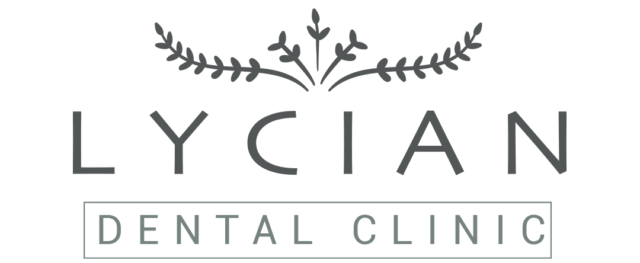Impacted teeth are a common dental issue, particularly when it comes to wisdom teeth, but any tooth can become impacted. This condition occurs when a tooth fails to emerge properly through the gum line or is blocked by another tooth. Understanding the causes, effects, and management options is crucial for maintaining oral health.
Causes of Impacted Teeth
Impacted teeth can result from several factors, including:
- Lack of Space: One of the most common causes of tooth impaction is insufficient space in the dental arch. When there isn’t enough room for a tooth to emerge, it can become trapped beneath the gum line or against adjacent teeth.
- Abnormal Tooth Angulation: Sometimes, teeth can grow at an abnormal angle, causing them to collide with other teeth or remain trapped beneath the gum line.
- Overcrowding: Overcrowded teeth can push each other out of alignment, leading to impaction. This is often seen in cases where the jaw is too small to accommodate all the teeth.
- Genetics: Genetic factors can play a role in tooth impaction. If your parents had teeth, you might be at a higher risk of experiencing the same problem.
- Retained Baby Teeth: In some cases, baby teeth may not fall out in time, preventing the permanent tooth from emerging properly, leading to impaction.
Effects of Impacted Teeth
Impacted teeth can cause a range of dental issues, including:
- Pain and Discomfort: One of the most immediate effects of an impacted tooth is pain, particularly when chewing or brushing. The pain can be persistent or intermittent, depending on the severity of the impaction.
- Infection: Impacted teeth can lead to infections if bacteria become trapped under the gum line. This can result in swelling, redness, and pus formation.
- Damage to Adjacent: An impacted tooth can exert pressure on adjacent teeth, causing them to shift out of alignment, become loose, or even damage the roots of neighboring teeth.
- Cysts and Tumors: In some cases, cause the formation of cysts, which can erode the jawbone and damage other teeth. Rarely, tumors can develop in conjunction with an impacted tooth.
- Gum Disease: Impacted teeth can make it difficult to clean the surrounding area properly, increasing the risk of gum disease.
Management of Teeth
The management of impacted teeth depends on the severity of the impaction and the symptoms experienced by the patient. Here are some common management strategies:
- Monitoring: In cases where the impacted tooth is not causing any symptoms, your dentist may recommend regular monitoring to ensure it doesn’t cause future problems. This involves regular dental check-ups and X-rays to track the tooth’s position.
- Surgical Removal: When an impacted tooth causes pain, infection, or damage to adjacent teeth, surgical removal is often the best option. This procedure is typically performed by an oral surgeon under local or general anesthesia. The dentist makes an incision in the gum, removes any bone blocking the tooth, and then extracts the tooth. This is most commonly done for impacted wisdom teeth.
- Orthodontic Treatment: In some cases, orthodontic treatment may be used to guide an impacted tooth into its proper position. This is often done in conjunction with the removal of other teeth to create space. Braces or aligners may be used to gradually move the tooth into the correct position.
- Dental Bridges and Implants: If an impacted tooth needs to be removed, dental bridges or dental implants can be used to fill the gap left by the missing tooth. A dental bridge involves placing crowns on the adjacent teeth and attaching a false tooth in between, while a dental implant involves placing a titanium post into the jawbone, which acts as an artificial root, and then attaching a crown on top.
- Pain Management and Antibiotics: Over-the-counter pain relievers and prescribed antibiotics can be used to manage pain and infection caused by impacted teeth. Your dentist may recommend these treatments before or after surgical removal.
Prevention of Impacted Teeth
While not all cases of impacted teeth can be prevented, certain measures can reduce the risk:
- Regular Dental Check-ups: Regular visits to the dentist can help identify potential issues early on. Dentists can monitor tooth development and take action before a tooth becomes fully impacted.
- Orthodontic Evaluation: Early orthodontic evaluations in childhood or adolescence can identify potential problems with tooth alignment and spacing, allowing for early intervention.
- Good Oral Hygiene: Maintaining good oral hygiene can prevent infections and other complications associated with impacted teeth. This includes brushing twice a day, flossing daily, and using mouthwash.
- Timely Removal : Ensuring that baby teeth fall out on time can prevent permanent from becoming impacted.
Conclusion
Impacted teeth are a significant dental concern that can lead to various complications if not properly managed. Understanding the causes, effects, and treatment options is essential for maintaining oral health. If you suspect you have an impacted tooth, it’s important to consult with a dental professional to determine the best course of action. With timely intervention, the risks associated with teeth can be minimized, and your overall dental health can be preserved. Whether through surgical removal, orthodontic treatment, or the use of dental bridges and implants, modern dentistry offers effective solutions for managing.

